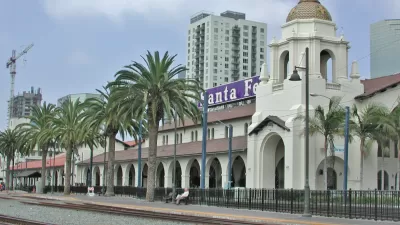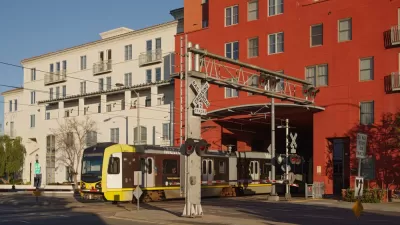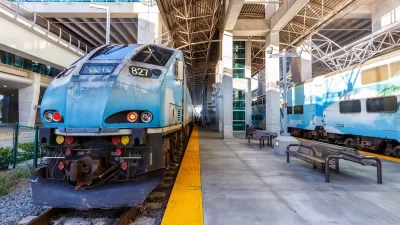Despite slowing population growth statewide, officials believe the region will "grow into" the new rail system if cities promote dense development around transit stations.

[Updated June 1, 2021] The success of an ambitious $160-billion plan for public transit and high-speed rail in San Diego depends on the region's future development, writes Joshua Emerson Smith in the San Diego Union-Tribune. With San Diego's—and California's—population growth rate slowing to a near halt, cities must "usher in dense urban development around transit stations" to make the new rail system effective. "Population growth is a bit less important than where that growth occurs," says Ethan Elkind, director of the climate program at UC Berkeley’s Center for Law, Energy and the Environment.
Critics of the plan say that "San Diego doesn’t have much of a chance of building the type of urban communities that would justify tens of billions of dollars in transit projects." Local communities, which "have bitterly fought housing requirements in court," have for decades challenged new multi-family housing construction in and around San Diego. Unlike other urban rail systems, San Diego's "would service a region with dispersed employment hubs, often featuring office parks with plentiful parking." Community activists also have concerns about displacement, access, and making urgent improvements to existing transit systems. "Advocates for low-income communities say they will support SANDAG’s new transportation plan, but only if the final version prioritizes immediate upgrades to the region’s bus and trolley systems."
"The phasing of various projects is still being determined, as is the financing. A tax initiative that spells out both could be put to voters as early as 2022."
FULL STORY: San Diego’s high-speed rail plan hinges on urban density as population growth wanes

Study: Maui’s Plan to Convert Vacation Rentals to Long-Term Housing Could Cause Nearly $1 Billion Economic Loss
The plan would reduce visitor accommodation by 25,% resulting in 1,900 jobs lost.

North Texas Transit Leaders Tout Benefits of TOD for Growing Region
At a summit focused on transit-oriented development, policymakers discussed how North Texas’ expanded light rail system can serve as a tool for economic growth.

Why Should We Subsidize Public Transportation?
Many public transit agencies face financial stress due to rising costs, declining fare revenue, and declining subsidies. Transit advocates must provide a strong business case for increasing public transit funding.

How to Make US Trains Faster
Changes to boarding platforms and a switch to electric trains could improve U.S. passenger rail service without the added cost of high-speed rail.

Columbia’s Revitalized ‘Loop’ Is a Hub for Local Entrepreneurs
A focus on small businesses is helping a commercial corridor in Columbia, Missouri thrive.

Invasive Insect Threatens Minnesota’s Ash Forests
The Emerald Ash Borer is a rapidly spreading invasive pest threatening Minnesota’s ash trees, and homeowners are encouraged to plant diverse replacement species, avoid moving ash firewood, and monitor for signs of infestation.
Urban Design for Planners 1: Software Tools
This six-course series explores essential urban design concepts using open source software and equips planners with the tools they need to participate fully in the urban design process.
Planning for Universal Design
Learn the tools for implementing Universal Design in planning regulations.
Ascent Environmental
Borough of Carlisle
Institute for Housing and Urban Development Studies (IHS)
City of Grandview
Harvard GSD Executive Education
Toledo-Lucas County Plan Commissions
Salt Lake City
NYU Wagner Graduate School of Public Service





























